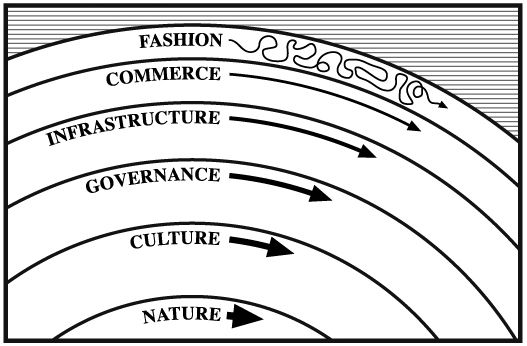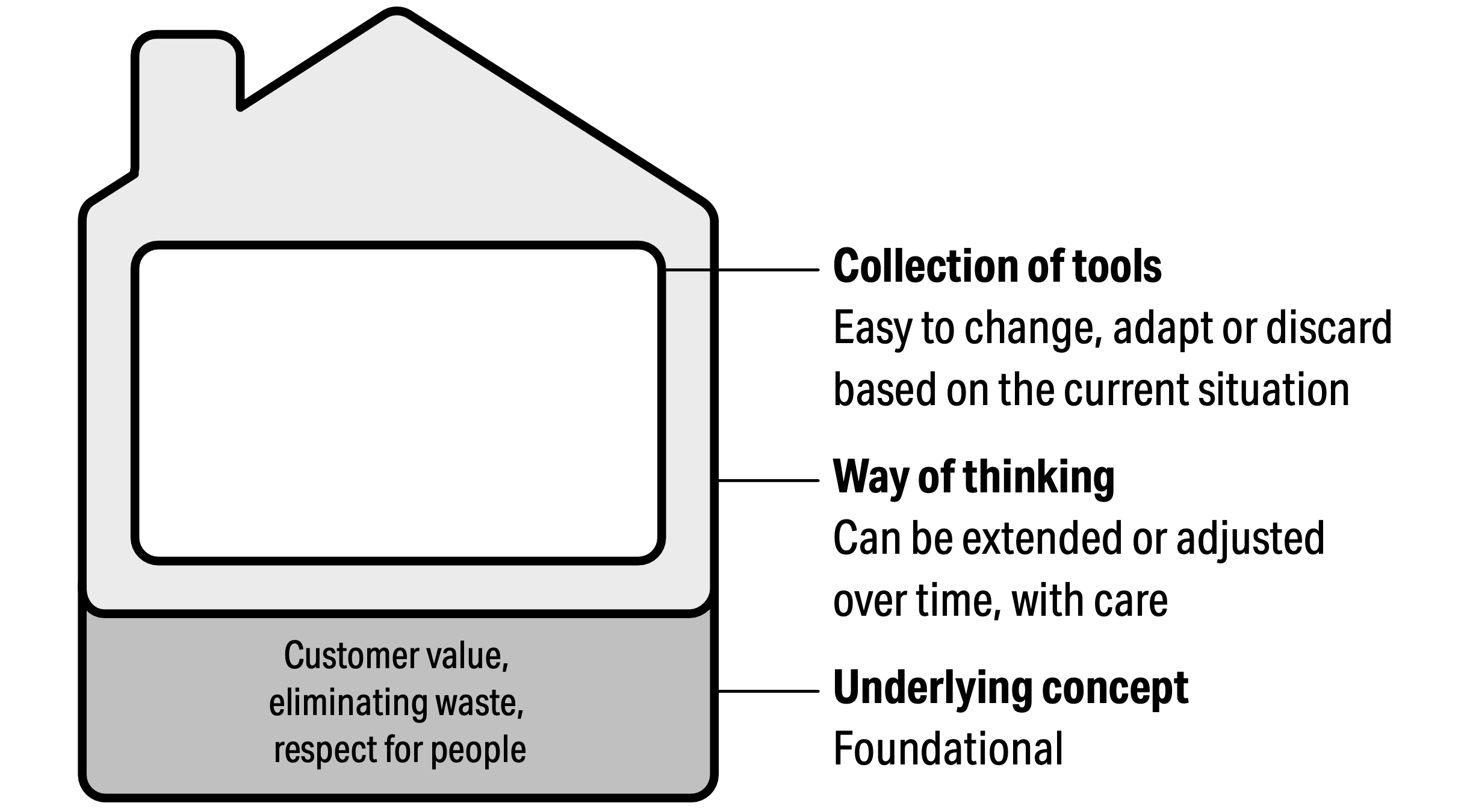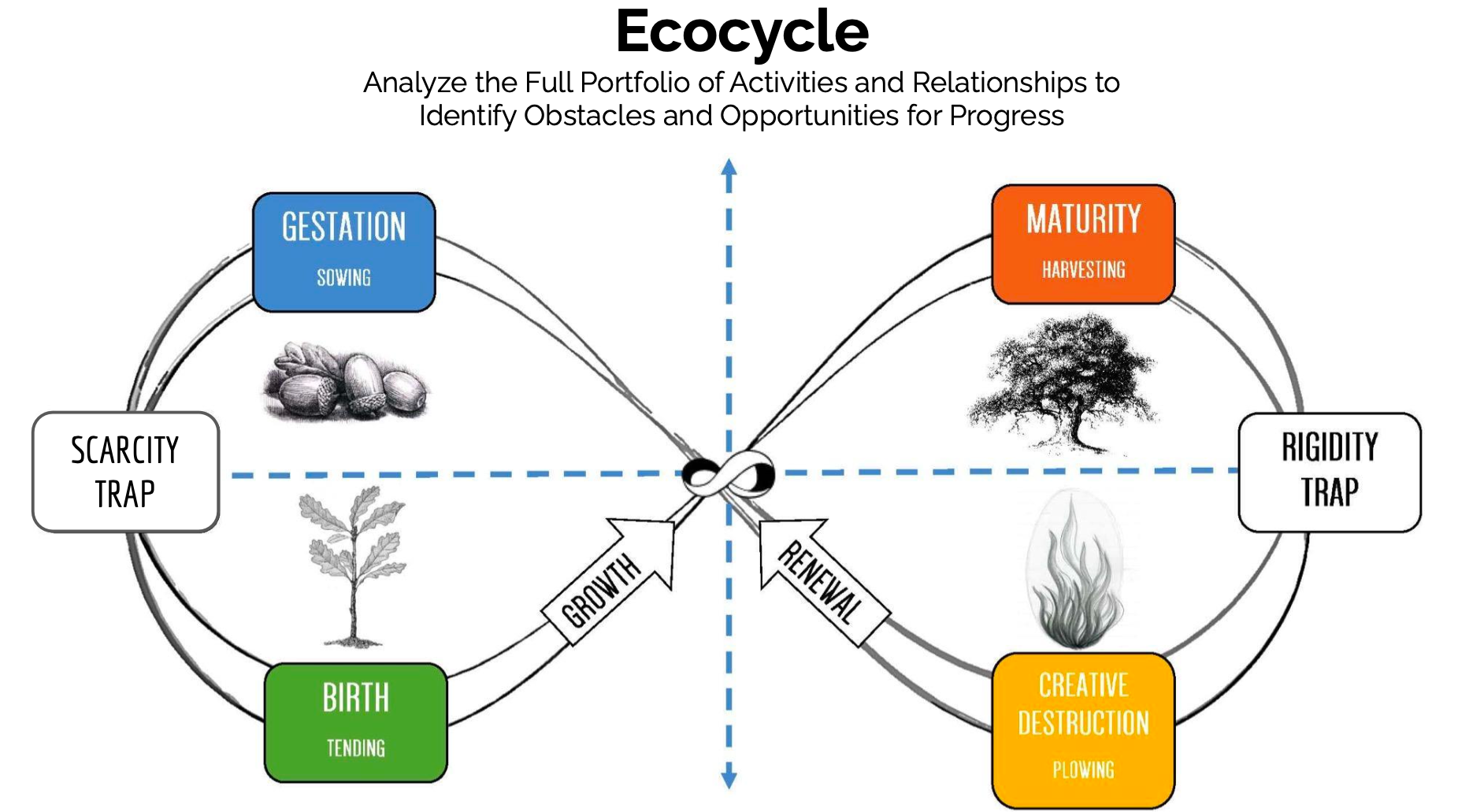I’ve been visiting these particular trees for years. Each time, I wonder: is this a view of perfect stability, or of a system building up potential until it changes—collapses, in this case—into something new?
There’s tension, and strength.
When I visit these trees I also see Stewart Brand’s pace layers:

Some things move faster than those trees: animals, water, me, you. Other things move slower. If you sit with this, it might become beautiful.
And then we go to work, where projects are atomized and boxed and shuffled around in tidy intervals, even though “whenever it starts is the right time.”
New beginnings are sudden
Transformation happens when it’s going to happen… and when it’s time, it happens fast, noisily, and irreversibly, like a tree falling.
- As a sandy bank erodes and trees slip into the saltwater, we tend to see that as a loss. The tides and the weather and the climate got to ‘em.
- When a group of people get to a moment of shared insight and identity and possibility, we tend to think that’s good. The choreography and structure and careful engagement got to ‘em.
Either way, what happens is a sudden shift from one state to another. The visible shift is a result of accumulated actions over time.
Not everything starts at the same time
Seven years ago I tossed out the “house of Lean”—with its ossified, layered columns and foundations, it was a powerful vision poorly communicated.
Instead, I taught for a while from this doodle:

(These are shearing layers, after Stewart Brand’s How Buildings Learn.)
What I liked about this figure is that it helped people sort out their approach to continuous improvement as a collection of things that start and stop and change over time and at different rates.
These days, I get people to the same point using ecocycle planning:

I’d prefer to work from a picture of trees growing than from a schematic of a little house.
For me, creative destruction is not “plowing” or the little controlled burn in the image above, but rather a huge tree slipping off and down into the tide, where it will drift and—at its own pace—break down and provide shelter, enrich the food web, become the beginning of many things. Whenever it starts is the right time.
Open space technology series:
- “Whoever comes is the right people.”
- “Whatever happens is the only thing that could have.”
- “Whenever it starts is the right time.” → now reading
- “When it is over, it is over.” (forthcoming)
